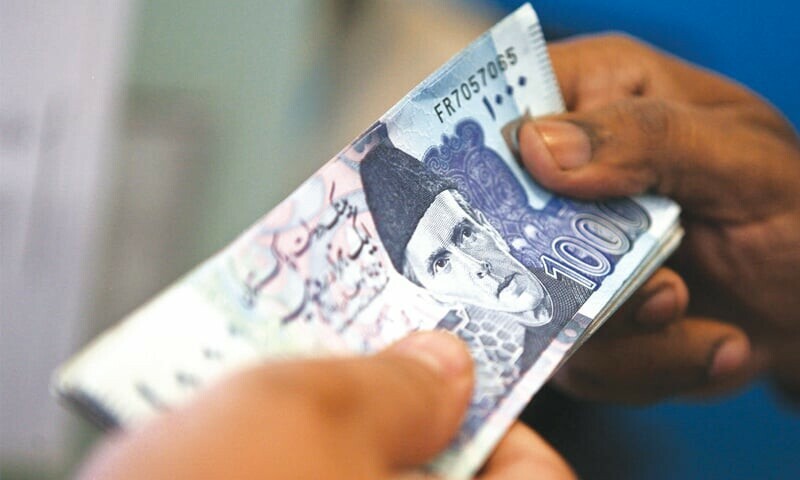
ISLAMABAD: The Ministry of Planning and Development has authorised the release of Rs141 billion under Public Sector Development Programme (PSDP) for the projects of federal ministries and divisions for the first quarter (July-September) of the current fiscal year.
Funds for Azad Jammu and Kashmir, and Gilgit-Baltistan will be released on a biannual basis due to seasonal constraints, according to the ministry’s Monthly Development Update for August 2025, released by Planning Minister Ahsan Iqbal on Tuesday.
According to the update, the Ministry of Finance notified the funds release strategy for the FY26 development budget, under which 15 per cent of the Rs1 trillion PSDP is required for disbursement in July-September, followed by 20pc in October-December, 25pc in January-March and the remaining 40pc in April-June.
This strategy has been challenged by the Ministry of Planning, which believes low disbursements in the first quarter negatively impacted project off-take. The minister has directed the Ministry of Finance to increase first-quarter PSDP releases from 15pc to 20pc and reduce last-quarter releases from 40pc to 30pc to ensure steady project execution throughout the year, according to a written statement.
AJK, GB to get funds on biannual basis due to ‘seasonal constraints’
The Ministry of Planning has accordingly authorised the release of Rs141bn (about 14pc of the PSDP outlay) in the third week of July. “Releases to the Azad Jammu and Kashmir and Gilgit-Baltistan are to be made biannually due to seasonal constraints,” for which the Ministry of Planning has written to the Ministry of Finance.
On the occasion, Mr Iqbal said that Pakistan’s economy had entered a phase of sustained stability, with all major macroeconomic indicators showing positive trends during 2025. GDP growth is on an upward trajectory, inflationary pressures have eased significantly, and both external and fiscal sectors have stabilised, the minister said.
In July alone, exports grew by 17pc, reaching $2.7bn compared to $2.3bn in the same month last year, which showed the government’s “priority to ensure continuous growth in exports as a driver of economic progress”, he said.*
The minister said the country recorded a current account surplus of $2.1bn in FY25, compared to a $2.1bn deficit the previous year — marking a positive turnaround of $4.2bn, the highest surplus in 22 years. Remittances also increased by 7.4pc in July, reaching $3.2bn, indicating strong confidence of overseas Pakistanis in the government’s economic management, he said.
On the fiscal front, the minister said the deficit declined to 5.4pc of GDP, the lowest in eight years, while the primary balance posted a surplus of 2.4pc of GDP — its highest level in 24 years. “Improved fiscal discipline has enabled the government to spend over Rs1.068tr on development projects in FY2025, achieving a historic 98pc utilisation rate,” he said.
Mr Iqbal said global confidence in Pakistan’s economy had strengthened, with international financial institutions and rating agencies acknowledging the turnaround. Barron’s described Pakistan’s recovery as a “macroeconomic miracle”, while Fitch, Moody’s and S&P upgraded the country’s ratings and outlook.
The pace of price increases has fallen sharply, with the Consumer Price Index (CPI) inflation rate dropping to 4.1pc in July 2025 from 11.1pc in July 2024, and the annual inflation rate down from 38pc to just 4pc, he said, quoting the development outlook, adding that “this downward trend in inflation is expected to continue, providing relief to the people”.
The minister noted that the Pakistan Stock Exchange crossed the 141,000 mark on Aug 1, driven by a new trade agreement with the United States, which secured the lowest tariff rates in South Asia. “It is now up to our business community to take full advantage of this opportunity,” he added.
Talking about the agriculture sector, he said that for the first time, comprehensive national agricultural data had been collected through the 7th Agriculture Census 2024, which will support evidence-based policymaking for food security, climate resilience and rural development.
In July 2025, the Central Development Working Party (CDWP) approved eight major projects and recommended three to the Executive Committee of the National Economic Council (Ecnec), expected to create over 2,000 jobs. Cost rationalisation measures saved Rs40bn in development projects, reflecting a strategic and efficient approach to public sector planning.
On the technological front, Pakistan successfully launched its Remote Sensing Satellite from China on July 31, 2025, which will aid in agriculture monitoring, urban planning, disaster management and climate change analysis, Mr Iqbal said, adding that in 2026, Pakistan’s first astronaut will conduct scientific experiments in collaboration with China.
He said that under the Prime Minister’s Ba-Ikhtiyar Naujawan Internship Programme, the Uraan Overseas Summer Internship Scholar Programme received over 2,300 applications from 45 countries, with 31 top-performing students selected and placed in key divisions of the Planning Commission.
He reiterated the government’s commitment to accelerating export-led, technology-driven projects under the PSDP 2025-26, with a focus on youth and women empowerment, climate resilience and inclusive development.
“Pakistan’s macroeconomic stability, coupled with structural reforms and strong international partnerships, is driving private sector growth and innovation. The government is determined to sustain this momentum to secure a prosperous and resilient future for the nation,” he said.
Published in Dawn, August 13th, 2025
